Horsezone News
Breed of the Month: The Arabian
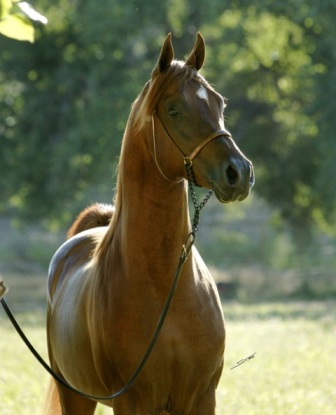 The Arabian originated on the Arabian Peninsula and with its distinctive head shape and high tail carriage, the Arabian is one of the most easily recognisable horse breeds in the world. It is also one of the oldest breeds, with archaeological evidence of horses that resemble modern Arabians dating back 4,500 years.
The Arabian originated on the Arabian Peninsula and with its distinctive head shape and high tail carriage, the Arabian is one of the most easily recognisable horse breeds in the world. It is also one of the oldest breeds, with archaeological evidence of horses that resemble modern Arabians dating back 4,500 years.
Throughout history, Arabian horses spread around the world by war and trade and were used to improve other breeds by adding speed, refinement, endurance, and strong bone. Today, Arabian bloodlines are found in almost every modern breed of riding horse.
Prized by the nomadic Bedouin people, the Arabian was often kept inside the family tent for shelter and protection from theft. Selective breeding for traits including an ability to form a cooperative relationship with humans created a horse breed that is good-natured, quick to learn, and willing to please. The Arabian also developed the high spirit and alertness needed in a horse used for raiding and war. This combination of willingness and sensitivity requires modern Arabian horse owners to handle their horses with competence and respect.
A versatile breed, Arabians dominate the discipline of endurance riding and compete today in many other fields of equestrian activity. At international FEI-sponsored endurance events, Arabians and half-Arabians are the dominant performers in distance competition. They are one of the top ten most popular horse breeds in the world. They are found worldwide, including Australia, USA and Canada, the United Kingdom, continental Europe, South America (especially Brazil), and in their land of origin, the Middle East.
Arabian horses have refined, wedge-shaped heads, a broad forehead, large eyes, large nostrils, and small muzzles. Most display a distinctive concave or "dished" profile. Many Arabians also have a slight forehead bulge between their eyes, called the "jibbah" by the Bedouin, which apparently adds additional sinus capacity, believed to have helped the Arabian horse in its native dry desert climate. Another breed characteristic is an arched neck with a large, well-set windpipe set on a refined, clean throatlatch. This structure of the poll and throatlatch was called the mitbah or mitbeh by the Bedouin, and in the best Arabians is long, allowing flexibility in the bridle and room for the windpipe.
Other distinctive features are a relatively long, level croup and naturally high tail carriage. The USEF breed standard requires Arabians have solid bone and correct conformation, ensuring that well-bred Arabians have a deep, well-angled hip and well laid-back shoulder. The usual height for Arabians is between 14.1 and 15.1hh. A common myth is th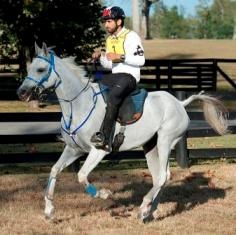 at Arabians are not strong because they are relatively small and refined. However, the Arabian horse is noted for a greater density of bone than other breeds, short cannons, sound feet, and a broad, short back, all of which give the breed physical strength comparable to many taller animals. Therefore, even a smaller Arabian can carry a heavy rider.
at Arabians are not strong because they are relatively small and refined. However, the Arabian horse is noted for a greater density of bone than other breeds, short cannons, sound feet, and a broad, short back, all of which give the breed physical strength comparable to many taller animals. Therefore, even a smaller Arabian can carry a heavy rider.
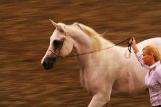 Being such an ancient breed, Arabian horses are the topic of many myths and legends. One famous myth puts the origin of the Arabian in the time of Ishmael, the son of Abraham. In this story, the Angel Jibril (also known as Gabriel) descended from Heaven and awakened Ishmael with a "wind-spout", which whirled toward him. The Angel then commanded the thundercloud to stop scattering dust and rain, and so it gathered itself into a prancing, handsome creature - a horse - that seemed to swallow up the ground. Hence, the Bedouins bestowed the title "Drinker of the Wind" to the first Arabian horse.
Being such an ancient breed, Arabian horses are the topic of many myths and legends. One famous myth puts the origin of the Arabian in the time of Ishmael, the son of Abraham. In this story, the Angel Jibril (also known as Gabriel) descended from Heaven and awakened Ishmael with a "wind-spout", which whirled toward him. The Angel then commanded the thundercloud to stop scattering dust and rain, and so it gathered itself into a prancing, handsome creature - a horse - that seemed to swallow up the ground. Hence, the Bedouins bestowed the title "Drinker of the Wind" to the first Arabian horse.
The Arabian Horse Society of Australia states that Arabian horses were first introduced to Australia in the earliest days of European settlement. They were imported in the ships bringing convicts and settlers and many came via India, to upgrade the pool of horses available for everyday use. They were also used in the breeding of racehorses and some of them became quite famous. About 1OO Arabian sires are included in the Australian Stud Book (for Thoroughbred Racehorses). They were part of the foundation of several breeds we consider uniquely “Australian” such as the Australian Stud Book Pony, the “Waler” and the Australian Stock Horse. Even though purebred Arabian horses were imported into Australia from the late 17OO’s, most of their progeny were “lost”, historically speaking, as there were no Purebred mares, and there was no Australian Arab Horse Stud Book in which to record their progeny.
In the early days of purebred Arabians in Australia, the British Arab Horse Society were happy to accept the Colonial horses for registration, and continued to do so from 1919 until at least 196O. Many of the early breeders used this facility and so lines of proven Purebred Arabian stock were established.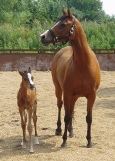
Most of the colts from these first breeding programs were sold all over the country from Melbourne to Darwin and all places in between. In the more populated areas, Agricultural Shows were held, with, in time, classes for Arabian horses, although there was no stipulation that these had to be registered. Results of Arabian classes at Sydney Royal Show exist from 1871.
Several early attempts were made to found The Arab Horse Society of Australia, however, it wasn’t until 1957 that The Arab Horse Society of Australasia was formed, the membership fee set and the RAS asked to assist in financing the printing of the first Stud Book.
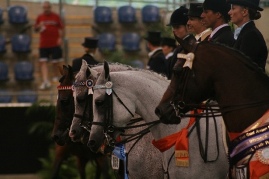 The new Society decided that its most important function was to preserve the purity of the breed, and with this in mind it set in place provision to henceforth record all matings and foalings, but firstly to investigate all existing pedigrees, before publishing its first Stud Book. It also took under its wing Anglo and Partbred Arabs. A Partbred Arab had to possess at least 5O% Arab blood, while an Anglo Arab was the product of Pure Arab and Thoroughbred breeding. The early meetings of the Society were dominated by the investigation of the provenance of those horses whose owners claimed them to be Pure, Part or Anglo Arabs.
The new Society decided that its most important function was to preserve the purity of the breed, and with this in mind it set in place provision to henceforth record all matings and foalings, but firstly to investigate all existing pedigrees, before publishing its first Stud Book. It also took under its wing Anglo and Partbred Arabs. A Partbred Arab had to possess at least 5O% Arab blood, while an Anglo Arab was the product of Pure Arab and Thoroughbred breeding. The early meetings of the Society were dominated by the investigation of the provenance of those horses whose owners claimed them to be Pure, Part or Anglo Arabs.
It wasn’t until 1960 that the Society was ready to publish its first Stud Book, but it was the first and most comprehensive history of the Arab horse in Australia, with its constitution, history, illustrations of prominent stallions, list of members, regulations, standard of excellence and reference pedigrees.
Up to 2004, the Society had published 26 Stud Books for Purebred Arabian horses, and has expanded its Derivative Registries to include Partbred Arabians, Anglo Arabians, Arabian Ponies, Arabian Riding Ponies, Arabian Warmbloods, Quarabs and Arabian Stockhorses. The Society now features an on-line studbook as part of their comprehensive website.
Over 5O,OOO Purebred Arabian horses, and well over 1OO,OOO horses altogether, including Derivatives have been registered since inception of the studbook and the Arabian Horse Society of Australia has approximately 4OOO members Australia-wide.
All States have Affiliates or Clubs which run Shows and other events at grass-roots level. They started out as State “Divisions” of the Society in the late 196O’s and the 197O’s, but have since become more autonomous and their numbers have mushroomed around the more-populated areas of the country. Others are focused on bloodlines or performance pursuits of specialist interest.
In addition to their popularity as endurance horses, Arabians are used in Australia in almost every discipline, from eventing, jumping and dressage, through to harness, pony club, western and campdrafting. There is also an extensive Arabian Breed Show calendar, which includes state and national championships and features various led and performance classes that showcase the Arabian horses’ versatility, such as native costume, show costume, western pleasure, horse in harness, horse to be ridden side saddle and working stock horse.
To find out more about Arabian horses in Australia and The Arabian Horse Society of Australia visit www.ahsa.asn.au
The NSW Arabian Horse Association Inc are hosting the 2011 East Coast Arabian Championships, from 3 - 5 February 2011 - ENTRIES CLOSE FRIDAY 3 DECEMBER. To find out more about this prestigious event visit www.nswarabian.org.au
IF YOU ARE KEEN TO OWN A HORSE FROM THIS ANCIENT YET PRACTICAL AND BEAUTIFUL BREED, CLICK HERE, TO VIEW HORSEZONE’S LISTINGS OF ARABIAN HORSES FOR SALE
News Search
Categories
- General
- Event Results
- Stallionzone
- Sponsored Shows
- Clubs
- Health
- Feature Horses
- Competitions
- Five Minutes With Horsezone
- Young Riders
- Reviews
- Training and Clinics
- Postcards from the saddle
- 2014 Equitana by HORSE FIRST
- 2013 Equitana
- 2012 Equitana
- 2012 London
- 2011 Equitana
- 2011 Queensland Floods
- 2010 WEG
